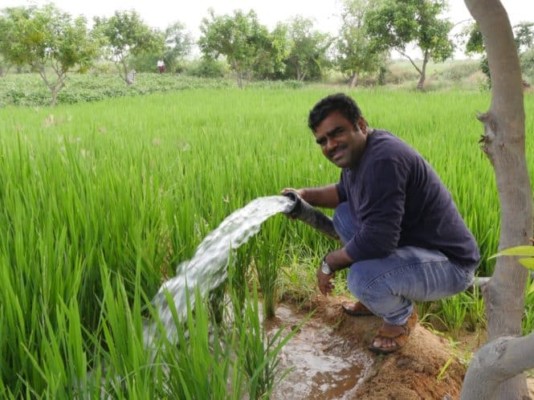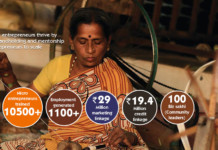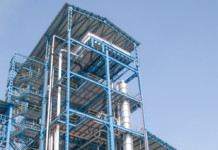Sikandar Meeranaik is a man on a mission. He believes he has what it takes to nearly solve India’s water problem by 2030 through his innovative borewell recharge and water management techniques. What he needs is technology, marketing support and substantial working capital to scale big time.
Sikandar started his NGO Sankalpa Rural Development Society in Hubli in 2008. Incubated in Deshpande Foundation, in 12 years he has put in place a close network of 600 self-help groups, a few development banks and Foundations. His NGO has so far recharged close to 1700 borewells largely in Karnataka and Andhra Pradesh.
Sankalpa does not just recharge borewells. It works on a sustainable water management model in villages it serves by roping in other NGOs, women self-help groups and micro-finance firms.
Surprisingly, his work has drawn more global attention than domestic. He won awards in Iran in 2017 and recently in Sri Lanka for his impact on improving the lives of rural communities through his unique water management techniques. NABARD nominated SRDS borewell recharge for its Rural innovation Award 2012.
Sikandar’s model not only recharges dry borewells using rainwater but also increases water flow to aquifers so that the whole area benefits. Nearby fallow land turn green and start offering at least one crop a year thereby raising the living standards of small holder farmers.
He believes in the principle of putting back water rather than simply focus on drawing out. He says: “I believe in order to have enough water for all for the continuation of a good life we must give it back to the earth. We cannot go on always taking without giving back and not suffer the consequences.”
India now has around 33 million borewells, making it the largest user of groundwater in the world. Borewells do not get replenished quickly like the open wells.
What’s Your Cost and Return on Investment?
The average cost of borewell recharge in rural areas is Rs 36,500. The return on investment depends on rainfall. Once the feeder pond is filled and emptied into the borewell recharge system 3-4 times, usually the recharge water will be enough for the following dry season. Farmers can increase their crops and their irrigated area and can often diversify into multiple crop types.
The type of ROI can be seen in these videos on YouTube of recent work we have done in Tamil Nadu. https://www.youtube.com/c/Sankalparuraldevlopmentsociety
Foot in Bengaluru
Sankalpa has so far recharged 70 odd borewells in urban areas and sees it as a big opportunity. It executed a large water recharge project for an industrial unit in Bengaluru recently and worked on a few apartment complexes. Sikandar says there’s good interest now and hopes to take on many projects this year. According to the Bangalore City Corporation figures Bengaluru has 3.6 lakh borewells. Almost half of them are dry or nearly dry.
Sikandar believes recharging 1000 wells a year is doable. But to solve India’s acute problem, he needs to do much more. That’s where he needs everyone else – banks, foundations, philanthropies to step in.
Even if Sikandar achieves a tenth of his goal, he would have made a huge impact to the lives of thousands of people, most of them poor farmers.
Audacious Goal
Sikandar says: “We need to do at least 100,000 borewells to make a significant impact. For this we need funding big time, and we need passionate people to be trained in technology.
We need to use cutting-edge technology to scale. We need a dedicated App to track our progress – track the number and geo-location of the work – as well as to assist us to keep track of our team and to be able to support them in the field.
Our systems also require upgrading – so that the recording of data is efficient and timely. We also need more people in HR and people to run the systems.
It’s unconscionable that India wastes most of the water it gets due to lack of commitment from all stakeholders in managing it appropriately. Most towns in states like Meghalaya and Kerala which receive excessive rainfall go dry half the year. It’s a systemic collapse and even a hundred Sikandar’s won’t be able to fix. But for now there’s hope for small farmers and some lucky apartment blocks whose wells have gone dry.









